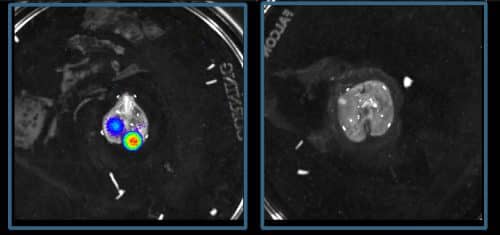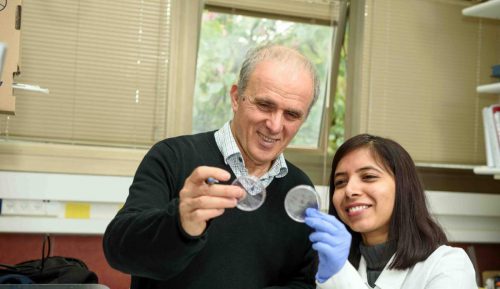The findings of the scientists from the Weizmann Institute may enable personalized treatment for patients in the metastatic stage

Ewing's sarcoma is a bone cancer caused by a single genetic defect. The disease mainly affects teenagers, and once it spreads in the body - it is very difficult to treat it. Scientists at the Weizmann Institute of Science recently discovered molecular connections that encourage the development of the disease and proposed a new treatment that proved itself in an experiment on mice. These findings were published in the scientific journal Cell Reports.
Almost every cell of the body has receptors for steroid hormones called glucocorticoids. These receptors transmit hormonal signals that regulate wakefulness, stress and other important functions. However, sometimes these receptors bind in the cell nucleus to transcription factors - proteins that activate or "turn off" genes - and thus may encourage the growth of cancerous tumors. The post-doctoral researcher, Dr. Swati Srivasatva, from the laboratory of Prof. Yosef Yordan in the Department of Biological Control, and her research partners set out to examine how connections formed between the receptors and the transcription factors encourage the development of cancer.
First, the scientists conducted a high-resolution analysis of connections between proteins in living cells and discovered previously unknown interactions. In this analysis, it became clear that after the receptors are activated by the glucocorticoids, they bind in the cell nucleus to transcription factors belonging to the ETS group (abbreviations for E-twenty-six) and together form a protein complex. One of the transcription factors in the ETS group is known as an Ewing sarcoma development factor: the gene that encodes it combines abnormally with another gene and together they form an oncogene (a cancer-causing gene).
After the connection between the oncogene and the glucocorticoid receptors was revealed, the scientists discovered in a series of experiments, both in laboratory vessels and in mice, that the receptors do encourage the growth of the sarcoma: the attachment of the receptors to the protein produced by the oncogene increased the growth and spread of the sarcoma cells. The research was carried out with drugs that are already approved for use in other diseases - a fact that may allow a relatively quick implementation of this therapeutic approach"/

These findings open the door to a new approach to treating Ewing's sarcoma: the scientists transplanted sarcoma cells taken from patients into mice - and discovered that the growth of the tumors slowed when the mice were treated with metyrapone, a drug against adrenal gland insufficiency that reduces the production of glucocorticoids. Another drug, mifepristone, which blocks the glucocorticoid receptors, prevented the spread of the sarcoma in its main route - from the bones to the lungs. In contrast, when the scientists increased the activity of the receptors, the sarcoma grew and spread much faster.
The scientists also conducted a genetic analysis of samples taken from the patients' tumors and identified seven genes regulated by the receptors, which were expressed at higher levels than usual in patients with particularly aggressive tumors. These genes can serve as a kind of "genetic signature" that will enable personalized treatment for patients. In other words, patients in whom the "signature" is more pronounced will be better candidates for treatment that neutralizes the receptors. The signature may also help to predict the development of the disease in advance: overexpression of these genes may indicate less good chances of recovery, while low expression will probably indicate better chances.
If and when these findings are confirmed in a human study, they may bring new hope to teenagers with this cancer, especially in cases where the sarcoma has already metastasized beyond the bones. "Our findings form the basis for a personalized approach to the treatment of Ewing's sarcoma," says Dr. Srivastava. The fact that the scientists used in this study drugs that are already approved for use in other diseases is expected to help realize this approach.
Dr. Nishanth Nathraj, Arunchalam Sekar, Dr. Soma Ghosh, Diana Drago-Garcia, Dr. Donatella Romanillo and Dr. Ilaria Marocco from the Department of Biological Control also participated in the study; Dr. Hamotel Bornstein Ovitz and Prof. Ido Amit from the Department of Immunology; Prof. Adi Kimchi, Dr. Lee Roth and Dr. Yuval Gilad from the Department of Molecular Genetics; and Dr. Ron Rothkopf from the Department of Life Sciences Research Infrastructures - all from the Weizmann Institute of Science. And likewise, Dr. Mattia Lauriola from the University of Bologna; Prof. Olivia DeLater, Prof. Andrey Zinoviev, Dr. Olivia Mirabeau and Dr. Didia Sorda from the Curie Institute in Paris; and Prof. Heinrich Kovar from the Children's Cancer Research Institute at the Medical University of Vienna.
